How to Plan a Trip to Valencia
Straddling Spain’s south-eastern coast, Valencia is a vivaciously captivating metropolis that brings both the past and future together. Speckled with strikingly futuristic museums, charming historic streets, and many immaculate beaches, there’s something for culture vultures, beach bums, and science maniacs alike. Here’s How to Plan a Trip to Valencia.
Valencia also boasts a thriving food scene, with a wealth of quirky tapas, bars and Michelin Star restaurants. This is the actual birthplace of paella. Foodies, get ready to stuff your face!
8-Step Planning Checklist
Before you can take the full plunge, work your way through these eight simple steps. Whether you’re planning for the summer, spring, winter or autumn, planning a trip to Valencia couldn’t be easier!
Follow this checklist to begin the adventure of a lifetime!
Step 1: Determine the Destination Country & Cities
Step 2: Decide on the Trip Duration
Step 3: Figure out When is the Best Time to Visit
Step 4: Create a Travel Budget
Step 5: Book Your Accommodation (preferably 3 to 4 months in advance)
Step 6: Research & Organise Transport & Activities
Step 7: Get Your Documents in Order (Visa, Passport & Travel Insurance)
Step 8: Nail the Process with this Packing List
Best Time to Visit Valencia
Perched on the cusp of the Mediterranean, Valencia is a year-round destination that boasts more than 300 days of blissful sunshine yearly. With a temperate climate, July to October is the most popular time to taste the beautiful beaches.
Typically, the ideal time to visit is between April and May, when the crowds haven’t peaked, and the weather is still warm enough to swim, snorkel, or doggy paddle your way through the ocean. The off-season, December to February, is somewhat comfortable, with the weather rarely dropping below ten °C, even in the height of winter. Another plus: the crowds have evaporated.
Language
Valencia is home to two official languages, Spanish (Castellano) and Valencian (Valenciano). Spanish is the predominant language widely spoken throughout Spain, and Valencian is a dialect of Catalan. You’ll often find buildings, landmarks, and street signs referred to in each of the two languages.
Things to do in Valencia
Valencia is jam-packed with must-see contemporary structures; from the Ciudad de las Artes y las Ciencias (City of the Arts and Sciences) to the planetarium, there’s even an oceanarium. Valencia has done a great job of upholding its ancestral Spanish roots among the prevailing, modern wave of infrastructure.
The city is graced with a handful of Modernista buildings, historic churches, and a distinctive old quarter that’s rich in character. Navigating any new city can be difficult, so here are some of the best things to do in Valencia.
Ciudad de las Artes y las Ciencias
The City of Arts and Sciences, also known as Ciudad de las Artes y las Ciencias, is a futuristic complex that blends cultural and architectural aspects.
Located in the heart of Valencia, it was designed by Santiago Calatrava and remains one of the 12 Treasures of Spain.
Check out the L'Oceanogràfic, the Museu de les Ciències Príncipe Felipe, and the Serreria Bridge.
The Ciudad de las Artes y las Ciencias also offers a range of activities, such as paddle boarding and water bikes in the pools surrounding the complex. For €5, you can shuffle and slide your way through the area.
This is hands-down my favourite spot in Valencia. It’s hard to beat the fusion of innovative architecture and luscious greenery with ancient historical monuments. I haven’t experienced a combination or anything similar to this whilst travelling. The views here are downright phenomenal.
As it’s the city’s most popular tourist attraction, it’s best to visit this state-of-the-art science and culture park in the early morning or late afternoon.
Valencia Cathedral and The Holy Grail of Valencia
This metropolitan Cathedral hides behind quite a few names. The Valencia Cathedral, alternatively known as the Cathedral of the Assumption of Our Lady of Valencia, or Saint Mary's Cathedral, is nestled in the very heart of Valencia.
The Cathedral ingeniously fuses Romanesque, Gothic and Baroque influences. Originally the site where a Roman temple stood firm, it was converted into a mosque and ultimately developed into the Valencia Cathedral.
Nowadays, the Cathedral itself is a prominent example of Gothic architecture, beautifully illustrating its historical importance through well-preserved relics, frescoes, sculptures, various museums and much more. Don’t miss the gigantic Gothic-style Door of the Apostles! There is also a free audio guide!
The central tower, known as the Miguelete, is an iconic symbol of Valencia. If you fancy sweeping views overlooking the vast blue-tiled domes and terracotta rooftops, it’s worth conquering the 207 steps to reach the top of the bell tower.
The Chapel of the Holy Grail contains a chalice recognised by the Vatican as possibly the original Holy Grail used by Jesus at the Last Supper and paintings by Goya and other significant artists. All my history fanatics, this one goes out to you. Don’t miss out on visiting the Church of San Juan of the Hospital and Valencia’s very own version of the Sistine Chapel, San Nicolas Church.
Plaza de la Reina and Plaza de la Virgen
Plaza de la Reina and Plaza de la Virgen are the main squares framing the Cathedral. These vivacious squares are dotted with historic buildings, many cafes, bars and restaurants, various shopping opportunities, and the ever-so-graceful Turia Fountain.
By day, this gem is a picture-perfect spot to chill out in the sunshine, dig into some Valencian cuisine, and soak up the stellar views. By night it serves as the heart of Valencian nightlife, with the surrounding bars and terraces buzzing with chatter and cheer. This is a great meeting spot for locals and tourists alike!
La Lonja de la Seda
La Lonja de la Seda is a late Gothic-style building and a UNESCO World Heritage Site.
Built as a silk market in the 15th century, the structure boasts towering ceilings and incredible architecture, serving as an awe-worthy backdrop.
The main hall, the Sala de Contratacion, is brimming with soaring arches, intriguing vaults, crystal chandeliers and intricately-detailed mosaic windows, and it leads you through the cute courtyard lined with your typical Mediterranean orange trees.
Be sure not to miss the Pavilion of the Consulate of the Sea, with its elaborately decorated ceilings and the extravagant stone staircase between two floors.
Top Tip: La Lonja de la Seda is €2 entrance fee; however, on Sundays, it’s free!
The Central Market of Valencia
Located just a stone’s throw away from La Lonja is the Central Market of Valencia. As Europe’s oldest food market, it oozes history through the style of Valencian Art Nouveau.
Somewhat resembling a cathedral with its spiralling domes, the Central Market of Valencia is graced with looming iron columns, vivid ceramics, and subtle stained glass. This is a great market to score some local delicacies. Keep your eyes peeled for saffron, oranges, local cheeses and cold-cut meats. Some say the Mercado Central is as lively now as it was a hundred years ago...
Colon Market
The Colon Market, or Mercado de Colón, is another striking example of Modernist architecture in Valencia. The Colon Market houses an array of cafes, bars and restaurants, making it an excellent spot to score souvenirs and unique crafts, particularly during Christmas.
Close by is the Pont de les Flors, a bridge covered in blooming flowers. Where are all my flower freaks at?! Flower power!
Old Town
Valencia's well-preserved, old town certainly has no shortage of sights on offer. The best way to discover its winding cobblestone streets, vibrant plazas (squares), and hidden gems is by foot. Like most Spanish cities, the historic old town is relatively compact, meaning you won’t need too many days to get the whole experience.
I’d recommend visiting the Old Town during the early morning if you want to ditch the big tourist groups that somehow simultaneously flock to the streets.
Torres de Serrano
Constructed in the 14th century, the Torres de Serrano consists of twelve towering gates that once formed part of the ancient city walls.
The towers boast elaborately embellished architecture, and the city's best views can be found at the top of the stone staircases. Entry is €2, but it’s free on Sundays.
Jardín del Túria
Spanning over 9km, the gardens connect the futuristic City of Arts and Sciences with the Biopark (zoo) in the west.
Once a flood-prone river, Valencia converted the former riverbed into the Jardín del Túria, a long stretch of glorious green park that winds through the city.
The gardens are sprinkled with sculptures, palm trees, exercise enthusiasts, and local buskers lighting up the area with their talent, or lack-there-of.
The surrounding area features various museums, children’s playgrounds, and a miniature theme park, which offers a delicious, cheap sangria, FYI.
My best advice is to rent a bike, spend a few hours exploring the park, pack a picnic, and find yourself under one of the palm trees for shade. You can even bike ride to the beach from here! We rented two bikes for €10,00 for about 3 hours. If you’re coming from a country like New Zealand or Australia, it’s important to note that here in Spain, helmets are not mandatory. This doesn’t mean you can go ham and flip a wheelie; some tracks are a bit dodgy, so just have your wits about you.
Ruzafa
If you are wondering how to plan a trip to Valencia, add this colourful corner of the city to your bucket list. Home to a thriving coffee culture, Ruzafa is one of the top places to score a delectable cup of coffee. If you’re hunting for a Melbourne-style flat white, Valencia’s hipster district, Ruzafa, should hit the spot. Lined with an alluring array of multi-coloured streets, the area houses an eclectic blend of photo galleries, vintage stores, and much more vibrant street art.
Not only is Ruzafa a foodie’s haven, but there are also some of the quirkiest eateries going ‘round, with many concrete cafes and bars serving up some scrumptious plant-based options. Check out the Mercat de Russafa (local market) for fresh produce and various goods.
Best Beaches in Valencia
Valencia also has several beaches, including some within nearby Albufera Park, a wetlands reserve with a lake and walking trails, perfect for avid exercise-o-holics. Check out some of the best beaches Valencia has on offer:
Playa de la Malvarrosa (Valencia)
El Saler
Port Saplaya
Playa del Puerto Sagunto
Playa Almardá
Playa de San Antonio
Get Cultured at La Tomatina
Held in the Valencian town of Buñol, La Tomatina is an annual event where to put it simply; the participants can destroy each other with tomatoes. Destroy, annihilate, obliterate whatever you desire... You can throw tomatoes at other participants purely for entertainment purposes and entertainment purposes only.
Think Dodgeball, but with tomatoes. Tomatoball? The bizarre battle occurs for one hour in the Plaza del Pueblo. The event, known as the world’s biggest food fight, typically occurs every year on the last Wednesday in August. My best advice is to wear closed shoes and find a pair of goggles. Yep. Goggles. Safety first, people!
Take a Road Trip
Amid the scorching Mediterranean summer and the peak of the frenzied, unprecedented state of Covid-19, we thought it would be the perfect timing to take a gamble and embark on a road trip along Spain’s south-eastern coast. If you’re interested in venturing on a road trip to Alicante, check out this post on a Road Trip: Valencia to Alicante.
Best Activities in Valencia
If you’re on the hunt for the top-rated attractions in Valencia, look no further. Here is the best of what Valencia has to offer:
What to Eat in Valencia
Valencia is famed as the home of paella, and the best news is it’s not just to attract tourists. Paella also plays a big part in family and local life, and Valencians are known to be fiercely passionate about what ingredients go into the rice-based dish.
There are a handful of traditional spots in the city to enjoy authentic paella and an influx of cooking classes and opportunities.
I’d recommend booking a cooking class with a local; this way, you can learn about the culture and tradition surrounding paella and then absolutely demolish your newly-created dish. *Cue drooling and sweaty palms.
Top Tip: Paella should never contain chorizo or prawn. No matter how many tourist-targeted tapas, restaurants love to boast about it.
Where to Stay in Valencia
Valencia is a traveller’s treasure trove on the east coast of Spain. From the endless experiences and bewildering architecture, there are many things to do and see. If you’re planning a trip to Valencia, choosing between the accommodation options may feel overwhelming. Valencia is packed with various accommodation options, from some seriously unique condo-type villas to apartments, hostels, and even Airbnb.
Consider location, amenities, budget, and proximity to attractions and public transport. Before you book, here's everything you need to know about where to stay in Valencia.
Ciutat Vella
Ciutat Vella, also known as Valencia’s Old Town, is where most attractions and activities are situated. As the historic heart of Valencia, this picture-perfect part of town boasts a rich history and fascinating culture. Woven with winding streets, stately architecture and colourful edifices, this is one of the best places to stay in Valencia.
You’ll find gems like the Central Market, La Lonja de la Seda (Silk Exchange), and the Cathedral. There are plenty of hostels and apartments and other accommodation options on offer. However, keep in mind that it’s generally more expensive. If you’re planning a trip to Valencia, this is the top area to stay for first-timers. Ciutat Vella has excellent access to public transport, making it a perfect fit for those travelling without a vehicle.
Ruzafa
Ruzafa is essentially Valencia’s hipster district. Topped with tons of street art, unique vintage and modern clothing stores, trendy restaurants and wild nightlife, Ruzafa has many hostels and apartments, making it a suitable option for backpackers and budget-friendly travellers.
This up-and-coming neighbourhood has become captivatingly hip and trendy, offering a fascinating fusion of modernist architecture, stately street art and independent shops. Taste local cuisine in the lively restaurants, strut your stuff through the streets and let loose in the nightlife scene. With boutique hotels, guesthouses and apartments, Ruzafa is one of the top places to stay in Valencia.
El Carmen
El Carmen, technically speaking, is located within the Ciutat Vella. That being said, the area is slowly making a name for itself. This trendy neighbourhood is nestled with a nuance of funky finds, from bohemian art to wild nightlife.
Home to winding, cobblestone streets, traditional tapas, bars and local restaurants, this is a slice of the more authentic side of Valencia.
You’ll find vibrant restaurants, boutique hotels and guesthouses aplenty. Accommodation prices in El Carmen tend to be a bit higher than in the surrounding suburbs.
Eixample
Sitting on the edge of the Old Town, Eixample is a modern district that mixes residential areas, eye-catching commercial streets and lush green spaces. This is one of the best areas to stay in Valencia if you’re interested the shopping opportunities. With numerous boutiques and department stores along Colon Street, you can shop ‘til you drop—wild styles. Eixample is home to upscale hotels, budget-friendly hotels and apartment rentals.
Beachfront Areas
It’s no secret that Valencia boasts a beautiful beachfront, so why not stay away from the hustle and bustle and kick back beachside? There are a handful of areas where you can find apartment rentals, resorts and affordable hotels. Some of the most popular picks include Malvarrosa Beach and Las Arenas Beach.
Top Hotels in Valencia:
How to Get Around Valencia
If you plan a trip to Valencia, getting around is relatively hassle-free. The public transport system is efficient, modern and reasonably priced. A one-way journey costs less than €1,50 if you purchase a travel card, which is a bargain compared to other European cities.
If you want to know how to plan a trip to Valencia, navigating the city is most accessible by bus. The EMT website has a convenient route planner, providing an overview of ticket prices and options. You can buy and top-up the card at various places, but I’d advise you to head to the nearest metro office.
The Valencia Tourist Card is most likely going to be your best bet. It includes free access to specific sights and unlimited transport for 1-3 days. Like many other European cities, Valencia now has a bicycle rental system called Valenbisi. This is the ideal option for those who want to sprinkle a bit of exercise into their travels.
Bonometro (10 Trips)
One zone: €7.20
Two zones: €10.40
Three zones: €14
Four zones: 20
TuiN Card
A cash card that permits journeys within the entire Metrovalencia network with any combination within zones.
One zone: 0,72 €
Two zones: 1,04 €
Three and four zones: 1,40 €
Airport: 2,00 €.
Valencia Tourist Card
A combined travel pass offers free urban public transport in zones A and B and discounts for listed museums, leisure activities, shopping opportunities, and eateries.
24 hrs: €15
48 hrs: €20
72 hrs: €25
Metro, Bus, Tram & Train
Valencia is well-equipped with an efficient metro system serving several city lines. The metro is one of the fastest ways of getting around, but it doesn’t connect every part of Valencia. The bus system, on the other hand, reaches almost every corner of the city. Alternatively, the tram system connects Valencia with neighbouring towns and beach areas and is fit for places like Alboraya or El Saler.
If you’re travelling from nearby cities like Madrid or Barcelona, trains (Renfe) or coach buses (ALSA) are the more economical options (with trains being the quickest). Buses usually take around 4 hours from Barcelona, and trains are about 2 hours.
There are two train stations; Estacío del Nord, located within the city centre, and a metro station called Xàtiva, situated just on the outskirts.
Bicycles
If you want to plan a trip to Spain, you’ll find that most major cities are majorly bike-friendly. Valencia is no exception to that rule, and cycling is one of the best ways to get around. Woven with a network of cycling lanes, you can go from the city centre, through the Gardens of Turia and down to the beach. One of the most popular bike-sharing services is Valenbisi, where you can hire a bicycle for a short trip.
Walking
Valencia’s Old Town is relatively compact, making walking a top choice. If you want to plan a trip to Valencia, set aside some time to stroll the streets. You’ll encounter many significant attractions, charming alleyways and hidden gems on foot. Explore the Old Town (Ciutat Vella), strut around the City of Arts and Sciences or take a leisurely stroll through the Turia Gardens.
Taxis and Ride-Sharing
Taxis are also available in Valencia; you can catch them from the taxi ranks or on the street. Budget travellers and backpackers could also consider using ride-sharing services like Uber or Cabify, which operate throughout the city. If you catch a cab, make sure the taxi driver uses the metre.
Car, Motorbike & Scooter Rental
Renting a car, motorbike, or scooter allows you to plan and follow your route. Having your own vehicle will enable you to go off the beaten track and travel at your own pace. The traffic conditions in the city centre can become congested during peak hours, so try to head out early and plan ahead. Parking is limited, so consider that, especially if you travel by car.
Valencia Airport
If you want to plan a trip to Valencia, you’ll most likely be arriving at the main airport, Aeroport de València (VLC). Located just 9 kilometres west of the city’s centre, there is one terminal building and a range of facilities. Valencia Airport serves both domestic and international flights, offering connections throughout Spain and Europe. The most popular airlines include Iberia, Ryanair, Vueling, Air Europ, and easyJet.
Here's everything you need to know about how to get to/from Valencia Airport.
Metro lines #3 or #5
Line 3: Rafelbunyol-Aeroport
Route: Through the airport and the city centre, the university area and the north zone of the metropolitan area.
Location: The ground floor of the regional flights terminal.
Cost: A one-way ticket (one zone) is €1,50 or (four zones) €3,90. A return ticket (one zone) is €2,90 or (four zones) €7,40.
Line 5: Aeroport-Marítim Serrería
Route: Direct from the airport to the city’s centre and the port of Valencia.
Location: The ground floor of the regional flights terminal.
Cost: A one-way ticket (one zone) is €1,50 or (four zones) €3,90. A return ticket (one zone) is €2,90 or (four zones) €7,40.
Aero-Bus
Departing every 15-20 minutes from outside the terminal, this is one of the faster options for public transport. The Aerobus takes you from Valencia Airport to the city centre in just 25 minutes for €2.50. Remember that this service only runs between 6 am and 10 pm. Tickets can be purchased on the bus!
City Bus #150
This is the most economical option if you’re planning a trip to Valencia. This bus runs between Valencia’s city centre and the airport, including Mislata, Manises, and Quart de Poblet stops. Tickets can be purchased on the bus!
A one-way ticket costs €1.45; however, there are discounts available. If you’re travelling in a family or over the age of 65, be sure to enquire with the bus driver or at the ticket office.
To Valencia from the Airport: Monday to Friday, from 5:25 to 22:00, every 26 minutes. Saturdays, from 5:25 to 22:05, every 35 minutes.
**Important to note: There’s no service on Sundays and public holidays.
To the Airport from Valencia: Monday to Friday, from 5:25 to 22:35, every 26 minutes. Saturdays, from 5:25 to 22:35, every 35 minutes.
**Important to note: There’s no bus service on Sundays and public holidays.
Valencia Travel Tips
Opt for the Valencia Tourist Card. It combines free urban public transport (including to and from the airport), free entrance to public museums and also a 25% discount on selected tour services. The cards can be bought in 24hr, 48hr, and 72hr bundles.
The afternoon siesta is taken very seriously in Spain. Most restaurants and shops will close between 2 pm and 6 pm.
If you’re on a budget, I’d recommend sourcing a Menú del día (menu of the day), which usually includes 2-3 courses from a set menu, plus a drink. The ground floor cafe in the free Museo de Prehistoria serves a nice three-course lunch for only €10 ($11). The service starts at 2 pm.
The five-day festival, ‘Las Fallas’, occurs in March every year. It’s increasingly becoming more popular, so if you plan on travelling to Valencia during this period, be sure to book your accommodation well in advance! During the Las Fallas de San José festival in March, hostels and hotels will book up quickly, so allow plenty of time for planning.
To save some cash, head to the supermarket to stock up on your supply of snacks. Head to Mercadona for the cheapest buys.
If you’re heading to Valencia for more than a couple of days, Ibiza is only half an hour's flight away, and it’s usually very cheap if you book with Vueling or Ryanair.
If La Tomatina is on your bucket list, book your accommodation well in advance! The town gets booked out reasonably quickly.
Whether you’re a fan of exploring strikingly futuristic museums, charming historic alleyways, a raging food scene, or off-the-radar adventure, I assure you that these spots will not disappoint.
Be sure to add Valencia as a destination to your Travel Bucket List. This comprehensive guide on How to Plan a Trip to Valencia can kick the hassle out of your next getaway. So, what are you waiting for?

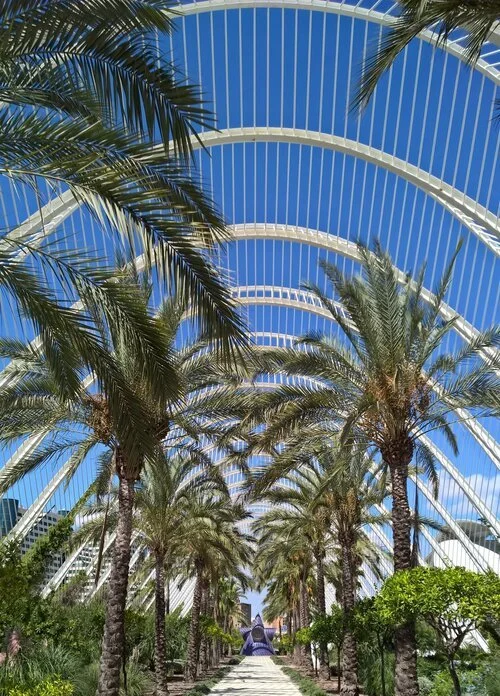
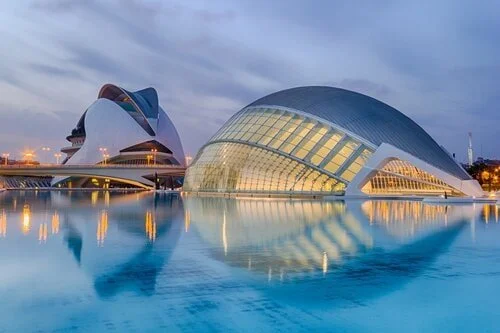
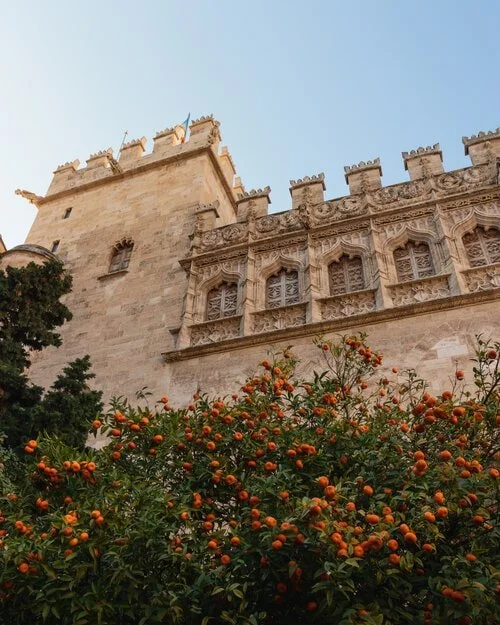
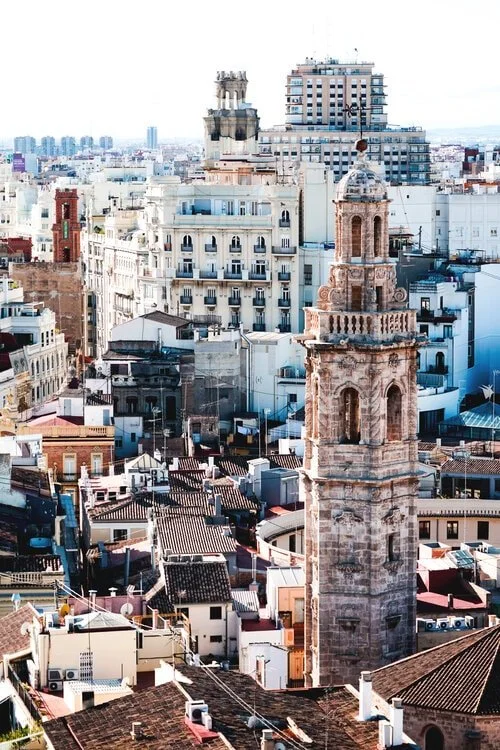

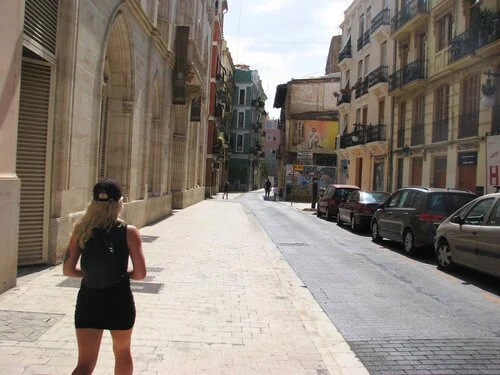

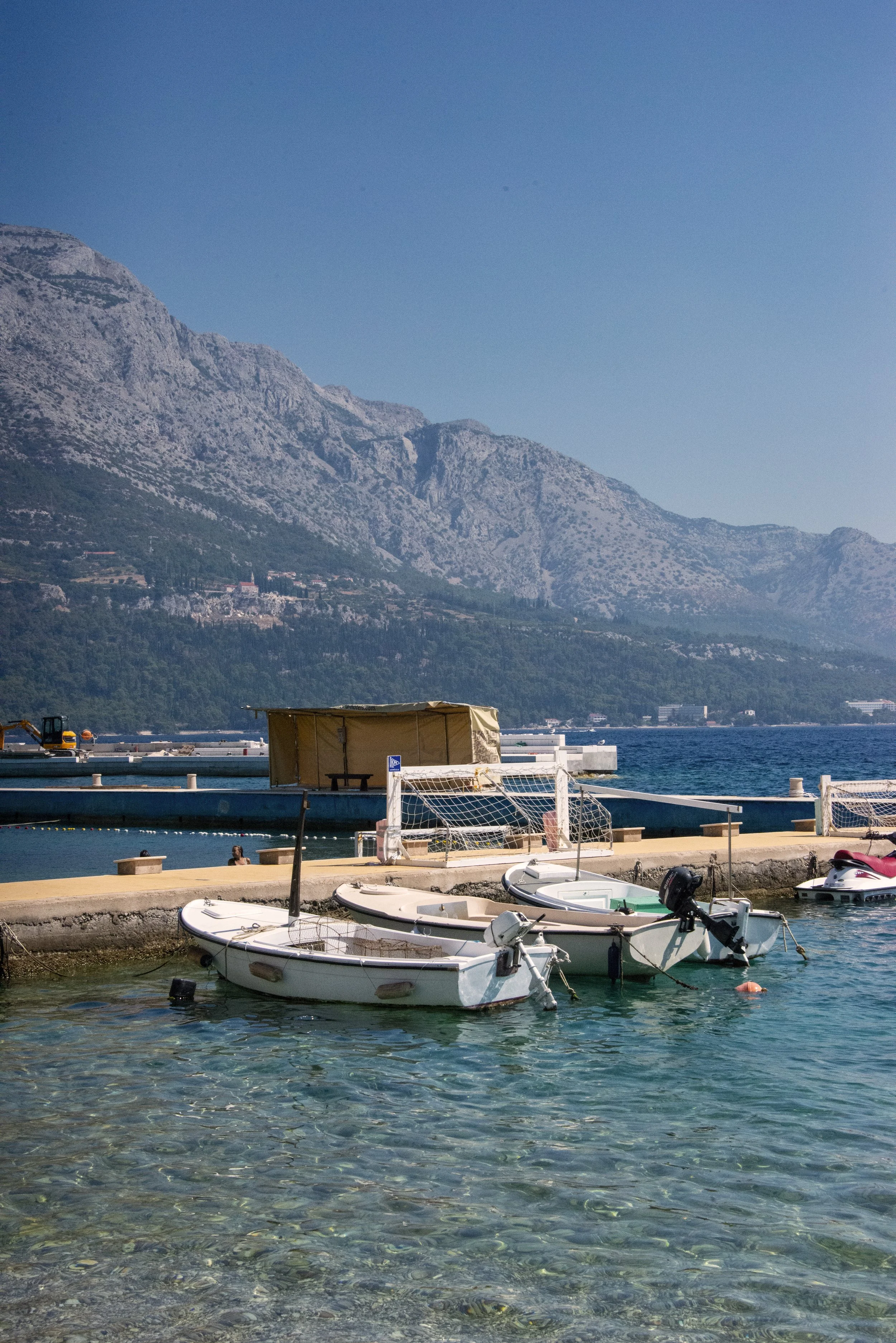
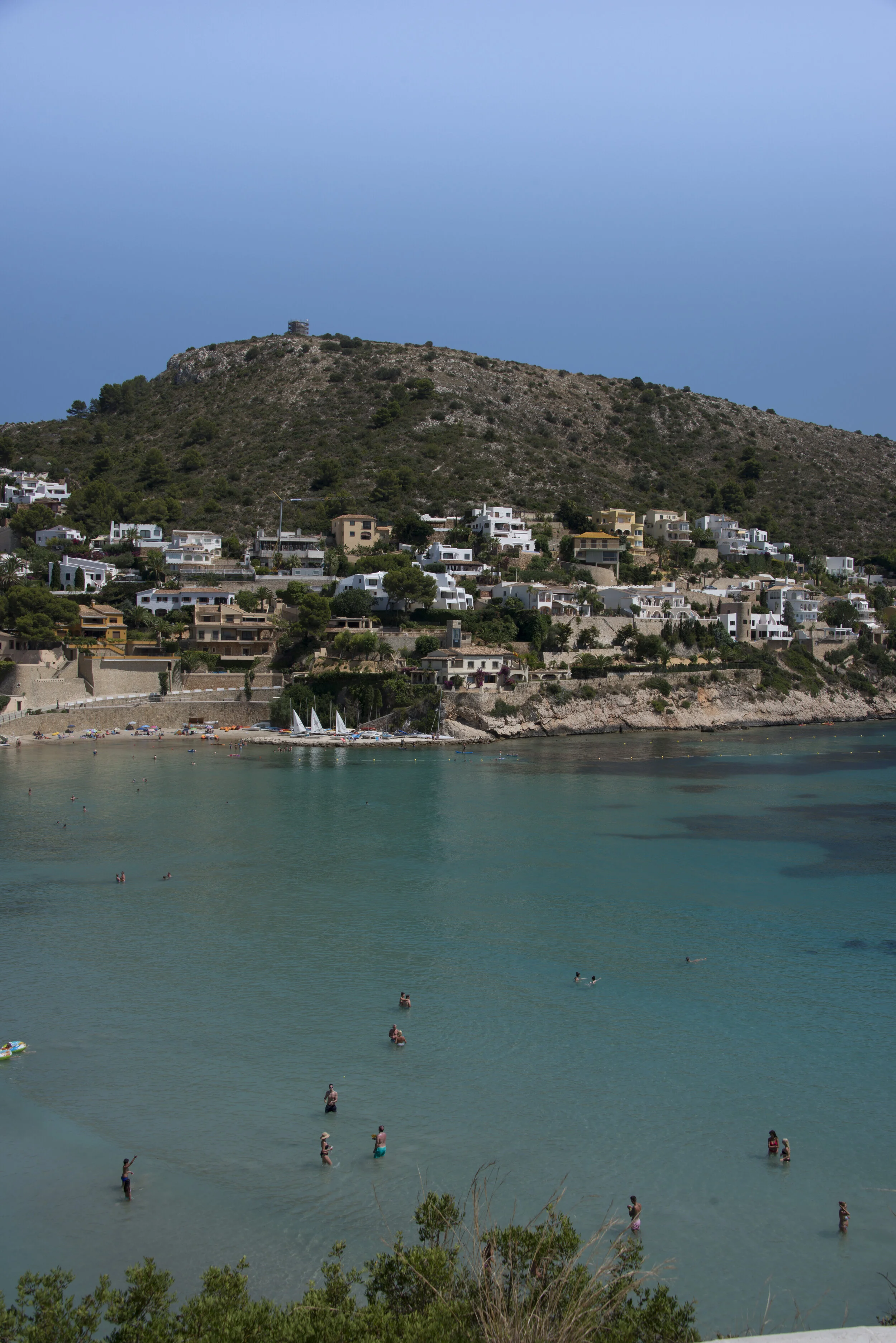







Situated at the foothills of the Sierra Nevada mountain range, this city boasts something for adventure, architecture and nature lovers alike. From the ancient Alhambra Complex to the saline white streets of Albacín, this Spanish city is steeped deep in charm. If you’re wondering how to plan a trip to Granada, look no further!